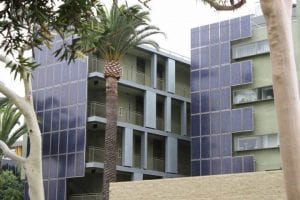The Australian Energy Market Operator has again underlined the need for more long term storage and dispatchable energy capacity, after updating its short and medium term supply forecasts as the planned closure of coal fired power stations continues to accelerate.
The new assessment released on Tuesday morning – an update of its Electricity Statement of Opportunities (ESOO) – takes into account a raft of new project commitments, and a number of project delays. It paints a mixed picture – with a generally better outlook over the short term but red flags emerging later this decade.
The good news is that investments such as the Waratah “super” battery commissioned by the NSW state government is having a major impact on reliving pressure on the country’s most coal dependent grid, and in neighbouring Queensland.
The Waratah super battery – to be built by the Blackrock-based battery storage company Akaysha – is the largest of its type in the world, and its ability to unlock capacity in major centres such as Sydney, Newcastle and Wollongong flows through to Queensland.
The reality is that the country is still not building enough new capacity at the rate required to meet the demands of replacing the five big coal generators due to retire, or meet the 82 per cent renewable share forecasts by AEMO’s planning documents and now adopted by the federal Labor government as a target.
There’s plenty in the pipeline – wind, solar and storage projects accountings for three times the country’s existing capacity – but not enough being built. Since August, just 1,326 megawatts (MW) of wind and 461MW (604MWh) of battery storage projects across the main grid have met AEMO’s commitment criteria.
“Urgent and ongoing investment in renewable energy, long-duration storage and transmission is needed to reliably meet demand from Australian homes and businesses,” AEMO CEO Daniel Westerman said in a statement.
 Westerman says reliability gaps begin to emerge against the strict “Interim Reliability Measure” from 2025 onwards, starting with NSW and Victoria.
Westerman says reliability gaps begin to emerge against the strict “Interim Reliability Measure” from 2025 onwards, starting with NSW and Victoria.
It’s important to note, however, that under the system AEMO uses it doesn’t factor in the infrastructure roadmap and auctions planned by the NSW and Victoria governments, both of whom are well aware of the need for new capacity and have storage and renewable auctions planned.
“While not yet sufficiently developed to meet AEMO’s commitment criteria, many generation, storage and transmission developments are progressing, and if developed to their current anticipated schedules will lessen the reliability risk and reduce the forecast capacity requirement,” it notes.
So the chances are that these gaps will be filled, which is what these ESOO documents are designed to do.
Short term gaps have already been plugged in South Australia and Victoria by new wind and battery developments. (see graph below).
AEMO also mentions gas, including the “new” Bolivar peaking gas generator in South Australia, but this is a long planned investment by Iberdrola as a replacement to the temporary diesel “standby” generators that were installed after the state-wide blackout in 2016. The new Tailem Bend battery also helps.
Indeed, it seems that the renewable state of South Australia – already at a world-leading 70 per cent wind and solar share in 2022 and hurtling towards “net” 100 per cent renewables within a few years – has the least problems of all states bar South Australia.
In Victoria, there is concern over what replaces the Yallourn brown coal generator, while in South Australia the focus is on the anticipated retirement of many of the remaining gas generators.
They are expected to be replaced by more big batteries and other storage, and in South Australia by new projects supporting the government’s green hydrogen plans, but these projects are yet to be confirmed.
In NSW and Queensland, reliability settings are likely to be breached towards 2029 and 2030 by the closures of the Vales Point and Called coal generators, but once again new projects – such as numerous big batteries and new hydro projects in Queensland – could fill the gap.
One of the darkest clouds hangs over the activities of the government owned Snowy Hydro, which has recently confirmed year-long delays to the controversial Snowy 2.0 pumped hydro mega project, and the equally problematic Kurri Kurri gas powered station in NSW.
The newly confirmed delays from Snowy 2.0 don’t actually change AEMO’s outlook because – despite not being advised of the delays by the company itself before its ESOO report last year – it had read the newspapers, taken note of the government warnings and dialled in a “sensitivity” to its forecasts.
And, in any case, AEMO expects there would not be enough transmission built to allow Snowy 2.0 to operate at anywhere near full capacity by that date.
But the obvious concern for the market is whether any further delays of Snowy 2.0 – and the stalling of its big boring machines give cause to wonder – will likely have a bigger impact of supply.
That’s because so many other smaller projects – generation and storage – have been sidelined by the sheer scale of the Snowy scheme, but if any further delays do emerge, it is also likely to affect the August, 2025 timeline for the closure of the four units at the country’s biggest coal generator, the 2.8GW Eraring facility.









